
|
Now Playing

It Happened in 1925 . . .
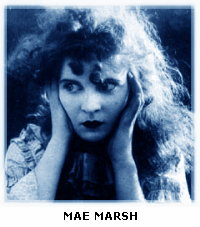 Howard Johnson borrowed $500 and turned a patent-medicine store in Wollaston, Massachusetts into a restaurant. It was the start of a chain that grew and grew . . . Robert F. Kennedy was born . . . After seven years on Broadway in the Ziegfeld Follies, W.C. Fields went to Hollywood to star in Sally of the Sawdust for D.W. Griffith . . . Mae Marsh, who started with Griffith at $35-per-week and got up to $250,000-a-year with Samuel Goldwyn, quit the movies and didn't come back until the remake of Over the Hill in 1931. She would be forever remembered for Birth of a Nation (1915) and Intolerance (1916) . . . Louis (later "Satchmo") Armstrong switched from the clarinet to the trumpet . . .
Howard Johnson borrowed $500 and turned a patent-medicine store in Wollaston, Massachusetts into a restaurant. It was the start of a chain that grew and grew . . . Robert F. Kennedy was born . . . After seven years on Broadway in the Ziegfeld Follies, W.C. Fields went to Hollywood to star in Sally of the Sawdust for D.W. Griffith . . . Mae Marsh, who started with Griffith at $35-per-week and got up to $250,000-a-year with Samuel Goldwyn, quit the movies and didn't come back until the remake of Over the Hill in 1931. She would be forever remembered for Birth of a Nation (1915) and Intolerance (1916) . . . Louis (later "Satchmo") Armstrong switched from the clarinet to the trumpet . . .  Houdini, the magician, was celebrating his twentieth year as a vaudeville headliner . . . In Since Lenin Died, author Max Eastman said that the Father of the Russian Revolution once had warned that Stalin would take too much power for himself if he were made his successor . . .
Houdini, the magician, was celebrating his twentieth year as a vaudeville headliner . . . In Since Lenin Died, author Max Eastman said that the Father of the Russian Revolution once had warned that Stalin would take too much power for himself if he were made his successor . . . 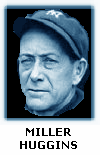 A Grand Jury in Philadelphia refused to vote any more indictments in liquor cases. The court denounced the jurors and sent them home . . . Miller Huggins suspended Babe Ruth for misconduct, fined him $5,000 and sent him home from St. Louis in the middle of a road trip . . . The Methodist Board of Temperance, Prohibition and Public Morals charged that vaudeville acts and comic strips were being used to dispense wet propaganda in New York--"a foreign city, run by foreigners for foreigners and according to foreign ideas" . . . President Coolidge
A Grand Jury in Philadelphia refused to vote any more indictments in liquor cases. The court denounced the jurors and sent them home . . . Miller Huggins suspended Babe Ruth for misconduct, fined him $5,000 and sent him home from St. Louis in the middle of a road trip . . . The Methodist Board of Temperance, Prohibition and Public Morals charged that vaudeville acts and comic strips were being used to dispense wet propaganda in New York--"a foreign city, run by foreigners for foreigners and according to foreign ideas" . . . President Coolidge 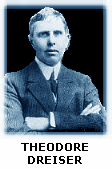 got himself a mechanical hobby horse to take exercise in the White House . . . The first volume of Mein Kampf (My Struggle), dictated to cellmate Rudolf Hess by Adolf Hitler, came out in the fall. got himself a mechanical hobby horse to take exercise in the White House . . . The first volume of Mein Kampf (My Struggle), dictated to cellmate Rudolf Hess by Adolf Hitler, came out in the fall.
The estate of Charles F. Murphy, departed leader of New York's Tammany Hall, came to $2,170,761 . . . The Internal Revenue Bureau revoked all permits allowing people to make two hundred gallons of tax-free wines in their homes . . . Senator Robert M. LaFollette died . . . Theodore 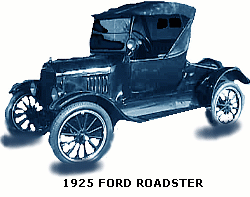 Dreiser's An American Tragedy and John Dos Passos' Manhattan Transfer came out but neither made No. 1 on the best-seller lists . . . The Ford roadster sold for $260 . . . Bryn Mawr canceled a twenty-eight-year-old ban and let its students smoke on the college grounds . . . Bernarr Macfadden's True Story, two years old, achieved a sale of 1,500,000 a month. A new Macfadden magazine, True Experiences, carried "The adventures of a man who was caught, unwillingly, in the boisterous whirl of the younger fast set--a crowd that went in for sin and jollity at the pace that sometimes kills!" . . .
Tommy Manville, Dreiser's An American Tragedy and John Dos Passos' Manhattan Transfer came out but neither made No. 1 on the best-seller lists . . . The Ford roadster sold for $260 . . . Bryn Mawr canceled a twenty-eight-year-old ban and let its students smoke on the college grounds . . . Bernarr Macfadden's True Story, two years old, achieved a sale of 1,500,000 a month. A new Macfadden magazine, True Experiences, carried "The adventures of a man who was caught, unwillingly, in the boisterous whirl of the younger fast set--a crowd that went in for sin and jollity at the pace that sometimes kills!" . . .
Tommy Manville,  heir to an asbestos fortune, took a second wife, Lois McCoin, his father's secretary. Tommy would marry nine more women after that--and the pace wouldn't kill him until 1967. heir to an asbestos fortune, took a second wife, Lois McCoin, his father's secretary. Tommy would marry nine more women after that--and the pace wouldn't kill him until 1967.
Benjamin (Benny Leonard) Leiner of New York's East Side, possibly the greatest lightweight of all time, always called himself "the original Mama's boy." In 1925 his mother asked him to quit the ring before he got hurt, so he retired--the undefeated champion. He lost $800,000 in the Wall Street crash in 1929 and put the gloves on again, as a welterweight, but was knocked out by Jimmy McLarnin. He died in a ring in 1947 while refereeing a fight . . . A reporter named John O'Hara kept getting fired off assorted newspapers and magazines around New York--but he had his mind on writing books, anyway . . . John Steinbeck quit Stanford University and went to work on Hearst's New York American; he would write some books too . . . George Bernard Shaw won the Nobel Prize for Literature (in 1962 it was Steinbeck) . . . The New Yorker bought a
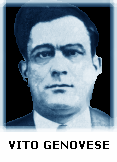 cartoon from an artist named Peter Arno for $25 . . . Marian Anderson, a seventeen-year-old from South Philadelphia's Negro slums, won a singing contest over three hundred other entrants . . . Finland's Paavo Nurmi broke the world's indoor record for the mile: 4 minutes and 13:6 seconds . . . Tim Mara, a bookmaker, bought the New York Football Giants' franchise for $2,500 . . . A twenty-seven-year-old hoodlum was arrested on a gun charge in Manhattan and fined $250; in time, this man, Vito Genovese, would become the Boss of All Bosses in the town's Cosa Nostra.
cartoon from an artist named Peter Arno for $25 . . . Marian Anderson, a seventeen-year-old from South Philadelphia's Negro slums, won a singing contest over three hundred other entrants . . . Finland's Paavo Nurmi broke the world's indoor record for the mile: 4 minutes and 13:6 seconds . . . Tim Mara, a bookmaker, bought the New York Football Giants' franchise for $2,500 . . . A twenty-seven-year-old hoodlum was arrested on a gun charge in Manhattan and fined $250; in time, this man, Vito Genovese, would become the Boss of All Bosses in the town's Cosa Nostra.
 On Broadway, you could see Josephine Hull in Craig's Wife, Lunt and Fontanne in Arms and the Man, Fay Bainter in The Enemy, George Jessel in The Jazz Singer, Jane Cowl in Easy Virtue, Peggy Wood in Candida, Lionel Barrymore in The Piker, Basil Rathbone in
On Broadway, you could see Josephine Hull in Craig's Wife, Lunt and Fontanne in Arms and the Man, Fay Bainter in The Enemy, George Jessel in The Jazz Singer, Jane Cowl in Easy Virtue, Peggy Wood in Candida, Lionel Barrymore in The Piker, Basil Rathbone in 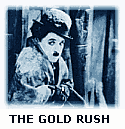 The Duchess and the Waiter, Marilyn Miller in Sunny, Al Jolson in Puzzles of 1925, Dennis King in The Vagabond King, and Ethel Barrymore and Walter Hampden in The Merchant of Venice. Humphrey Bogart had a part in The Cradle Snatchers with Raymond Hackett, Mary Boland and Edna May Oliver . . . At the movies, you could see Lon Chaney in The Phantom of the Opera and Charlie Chaplin in The Gold Rush.
The Duchess and the Waiter, Marilyn Miller in Sunny, Al Jolson in Puzzles of 1925, Dennis King in The Vagabond King, and Ethel Barrymore and Walter Hampden in The Merchant of Venice. Humphrey Bogart had a part in The Cradle Snatchers with Raymond Hackett, Mary Boland and Edna May Oliver . . . At the movies, you could see Lon Chaney in The Phantom of the Opera and Charlie Chaplin in The Gold Rush.
The Hero Dog . . .
"One morning the world woke up and there was no news."
--Oscar Williams
 For sustained, paper-selling interest, two stories would use up more space during 1925 than the Scopes trial.
For sustained, paper-selling interest, two stories would use up more space during 1925 than the Scopes trial.
When most of the Eskimos in the ice-bound town of Nome caught diphtheria, a half-breed malamute named Balto became the hero. The nearest railhead was 655 miles away in Nenana, and the way was lined with an 80-mile-an-hour blizzard, blinding snow and 50 below zero temperatures. Several dog-sled teams started out for Nome with  life-saving serums, but the only team to make it all the way was led by the indomitable Balto. Gunner Kassen, the man behind the reins was all but forgotten as the story unfolded. Indeed, Kassen confessed that he had run out of steam as the perilous journey neared its end. He said Balto made the final push without any encouragement. He wanted Balto to have all the glory. And Balto did; his star hung so high in the heavens that it made Rin Tin Tin and Strongheart look like movie dogs, which they were. life-saving serums, but the only team to make it all the way was led by the indomitable Balto. Gunner Kassen, the man behind the reins was all but forgotten as the story unfolded. Indeed, Kassen confessed that he had run out of steam as the perilous journey neared its end. He said Balto made the final push without any encouragement. He wanted Balto to have all the glory. And Balto did; his star hung so high in the heavens that it made Rin Tin Tin and Strongheart look like movie dogs, which they were.
. . . And the Man in the Cave
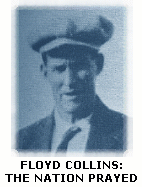 Floyd Collins had to get stuck underground to push Balto off of Page One. A rock fall pinned the thirty-eight-year-old Kentuckian 125 feet down in a sand cave near Cave City, Kentucky, on January 30. His cries were heard by passing hillmen the next morning but he was eight hundred feet from the tunnel entrance and there appeared to be no way to get to him. William B. (Skeets) Miller, a skinny reporter for the Louisville Courier-Journal, wriggled into the treacherous hole, called Crystal Cave, and interviewed Collins, and pretty soon newspapers everywhere were rushing correspondents to the scene. Then, while the wires hummed, an assortment of experts squabbled outside the cave over a means of rescue. They never did quite agree, and Collins' ordeal went on. On the eighteenth day, a rescue worker made his way to the unlucky man and found him dead.
Floyd Collins had to get stuck underground to push Balto off of Page One. A rock fall pinned the thirty-eight-year-old Kentuckian 125 feet down in a sand cave near Cave City, Kentucky, on January 30. His cries were heard by passing hillmen the next morning but he was eight hundred feet from the tunnel entrance and there appeared to be no way to get to him. William B. (Skeets) Miller, a skinny reporter for the Louisville Courier-Journal, wriggled into the treacherous hole, called Crystal Cave, and interviewed Collins, and pretty soon newspapers everywhere were rushing correspondents to the scene. Then, while the wires hummed, an assortment of experts squabbled outside the cave over a means of rescue. They never did quite agree, and Collins' ordeal went on. On the eighteenth day, a rescue worker made his way to the unlucky man and found him dead. 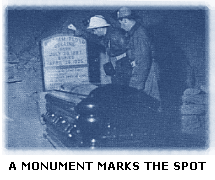 The body was left in the rocky mausoleum and there's a marker over it today. The body was left in the rocky mausoleum and there's a marker over it today.
Why did the plight of Floyd Collins draw such big headlines at a time when mine disasters involving scores of men often got stuck away on back pages? The answer was simple. In terms of human interest, it was a better story than an everyday explosion or dirt slide in a mine. It was one man's fight against Mother Nature. It was better than fiction and better than a movie script.
[ previous page ]
[ back to top ]
[ next page ]
copyright © Estate of Paul Sann
NOTICE OF COPYRIGHT
|

 Floyd Collins had to get stuck underground to push Balto off of Page One. A rock fall pinned the thirty-eight-year-old Kentuckian 125 feet down in a sand cave near Cave City, Kentucky, on January 30. His cries were heard by passing hillmen the next morning but he was eight hundred feet from the tunnel entrance and there appeared to be no way to get to him. William B. (Skeets) Miller, a skinny reporter for the Louisville Courier-Journal, wriggled into the treacherous hole, called Crystal Cave, and interviewed Collins, and pretty soon newspapers everywhere were rushing correspondents to the scene. Then, while the wires hummed, an assortment of experts squabbled outside the cave over a means of rescue. They never did quite agree, and Collins' ordeal went on. On the eighteenth day, a rescue worker made his way to the unlucky man and found him dead.
Floyd Collins had to get stuck underground to push Balto off of Page One. A rock fall pinned the thirty-eight-year-old Kentuckian 125 feet down in a sand cave near Cave City, Kentucky, on January 30. His cries were heard by passing hillmen the next morning but he was eight hundred feet from the tunnel entrance and there appeared to be no way to get to him. William B. (Skeets) Miller, a skinny reporter for the Louisville Courier-Journal, wriggled into the treacherous hole, called Crystal Cave, and interviewed Collins, and pretty soon newspapers everywhere were rushing correspondents to the scene. Then, while the wires hummed, an assortment of experts squabbled outside the cave over a means of rescue. They never did quite agree, and Collins' ordeal went on. On the eighteenth day, a rescue worker made his way to the unlucky man and found him dead.  The body was left in the rocky mausoleum and there's a marker over it today.
The body was left in the rocky mausoleum and there's a marker over it today.
 Howard Johnson borrowed $500 and turned a patent-medicine store in Wollaston, Massachusetts into a restaurant. It was the start of a chain that grew and grew . . . Robert F. Kennedy was born . . . After seven years on Broadway in the Ziegfeld Follies, W.C. Fields went to Hollywood to star in Sally of the Sawdust for D.W. Griffith . . . Mae Marsh, who started with Griffith at $35-per-week and got up to $250,000-a-year with Samuel Goldwyn, quit the movies and didn't come back until the remake of Over the Hill in 1931. She would be forever remembered for Birth of a Nation (1915) and Intolerance (1916) . . . Louis (later "Satchmo") Armstrong switched from the clarinet to the trumpet . . .
Howard Johnson borrowed $500 and turned a patent-medicine store in Wollaston, Massachusetts into a restaurant. It was the start of a chain that grew and grew . . . Robert F. Kennedy was born . . . After seven years on Broadway in the Ziegfeld Follies, W.C. Fields went to Hollywood to star in Sally of the Sawdust for D.W. Griffith . . . Mae Marsh, who started with Griffith at $35-per-week and got up to $250,000-a-year with Samuel Goldwyn, quit the movies and didn't come back until the remake of Over the Hill in 1931. She would be forever remembered for Birth of a Nation (1915) and Intolerance (1916) . . . Louis (later "Satchmo") Armstrong switched from the clarinet to the trumpet . . .  Houdini, the magician, was celebrating his twentieth year as a vaudeville headliner . . . In Since Lenin Died, author Max Eastman said that the Father of the Russian Revolution once had warned that Stalin would take too much power for himself if he were made his successor . . .
Houdini, the magician, was celebrating his twentieth year as a vaudeville headliner . . . In Since Lenin Died, author Max Eastman said that the Father of the Russian Revolution once had warned that Stalin would take too much power for himself if he were made his successor . . .  A Grand Jury in Philadelphia refused to vote any more indictments in liquor cases. The court denounced the jurors and sent them home . . . Miller Huggins suspended Babe Ruth for misconduct, fined him $5,000 and sent him home from St. Louis in the middle of a road trip . . . The Methodist Board of Temperance, Prohibition and Public Morals charged that vaudeville acts and comic strips were being used to dispense wet propaganda in New York--"a foreign city, run by foreigners for foreigners and according to foreign ideas" . . . President Coolidge
A Grand Jury in Philadelphia refused to vote any more indictments in liquor cases. The court denounced the jurors and sent them home . . . Miller Huggins suspended Babe Ruth for misconduct, fined him $5,000 and sent him home from St. Louis in the middle of a road trip . . . The Methodist Board of Temperance, Prohibition and Public Morals charged that vaudeville acts and comic strips were being used to dispense wet propaganda in New York--"a foreign city, run by foreigners for foreigners and according to foreign ideas" . . . President Coolidge  got himself a mechanical hobby horse to take exercise in the White House . . . The first volume of Mein Kampf (My Struggle), dictated to cellmate Rudolf Hess by Adolf Hitler, came out in the fall.
got himself a mechanical hobby horse to take exercise in the White House . . . The first volume of Mein Kampf (My Struggle), dictated to cellmate Rudolf Hess by Adolf Hitler, came out in the fall. Dreiser's An American Tragedy and John Dos Passos' Manhattan Transfer came out but neither made No. 1 on the best-seller lists . . . The Ford roadster sold for $260 . . . Bryn Mawr canceled a twenty-eight-year-old ban and let its students smoke on the college grounds . . . Bernarr Macfadden's True Story, two years old, achieved a sale of 1,500,000 a month. A new Macfadden magazine, True Experiences, carried "The adventures of a man who was caught, unwillingly, in the boisterous whirl of the younger fast set--a crowd that went in for sin and jollity at the pace that sometimes kills!" . . .
Tommy Manville,
Dreiser's An American Tragedy and John Dos Passos' Manhattan Transfer came out but neither made No. 1 on the best-seller lists . . . The Ford roadster sold for $260 . . . Bryn Mawr canceled a twenty-eight-year-old ban and let its students smoke on the college grounds . . . Bernarr Macfadden's True Story, two years old, achieved a sale of 1,500,000 a month. A new Macfadden magazine, True Experiences, carried "The adventures of a man who was caught, unwillingly, in the boisterous whirl of the younger fast set--a crowd that went in for sin and jollity at the pace that sometimes kills!" . . .
Tommy Manville,  heir to an asbestos fortune, took a second wife, Lois McCoin, his father's secretary. Tommy would marry nine more women after that--and the pace wouldn't kill him until 1967.
heir to an asbestos fortune, took a second wife, Lois McCoin, his father's secretary. Tommy would marry nine more women after that--and the pace wouldn't kill him until 1967. cartoon from an artist named Peter Arno for $25 . . . Marian Anderson, a seventeen-year-old from South Philadelphia's Negro slums, won a singing contest over three hundred other entrants . . . Finland's Paavo Nurmi broke the world's indoor record for the mile: 4 minutes and 13:6 seconds . . . Tim Mara, a bookmaker, bought the New York Football Giants' franchise for $2,500 . . . A twenty-seven-year-old hoodlum was arrested on a gun charge in Manhattan and fined $250; in time, this man, Vito Genovese, would become the Boss of All Bosses in the town's Cosa Nostra.
cartoon from an artist named Peter Arno for $25 . . . Marian Anderson, a seventeen-year-old from South Philadelphia's Negro slums, won a singing contest over three hundred other entrants . . . Finland's Paavo Nurmi broke the world's indoor record for the mile: 4 minutes and 13:6 seconds . . . Tim Mara, a bookmaker, bought the New York Football Giants' franchise for $2,500 . . . A twenty-seven-year-old hoodlum was arrested on a gun charge in Manhattan and fined $250; in time, this man, Vito Genovese, would become the Boss of All Bosses in the town's Cosa Nostra. On Broadway, you could see Josephine Hull in Craig's Wife, Lunt and Fontanne in Arms and the Man, Fay Bainter in The Enemy, George Jessel in The Jazz Singer, Jane Cowl in Easy Virtue, Peggy Wood in Candida, Lionel Barrymore in The Piker, Basil Rathbone in
On Broadway, you could see Josephine Hull in Craig's Wife, Lunt and Fontanne in Arms and the Man, Fay Bainter in The Enemy, George Jessel in The Jazz Singer, Jane Cowl in Easy Virtue, Peggy Wood in Candida, Lionel Barrymore in The Piker, Basil Rathbone in  The Duchess and the Waiter, Marilyn Miller in Sunny, Al Jolson in Puzzles of 1925, Dennis King in The Vagabond King, and Ethel Barrymore and Walter Hampden in The Merchant of Venice. Humphrey Bogart had a part in The Cradle Snatchers with Raymond Hackett, Mary Boland and Edna May Oliver . . . At the movies, you could see Lon Chaney in The Phantom of the Opera and Charlie Chaplin in The Gold Rush.
The Duchess and the Waiter, Marilyn Miller in Sunny, Al Jolson in Puzzles of 1925, Dennis King in The Vagabond King, and Ethel Barrymore and Walter Hampden in The Merchant of Venice. Humphrey Bogart had a part in The Cradle Snatchers with Raymond Hackett, Mary Boland and Edna May Oliver . . . At the movies, you could see Lon Chaney in The Phantom of the Opera and Charlie Chaplin in The Gold Rush.
 For sustained, paper-selling interest, two stories would use up more space during 1925 than the Scopes trial.
For sustained, paper-selling interest, two stories would use up more space during 1925 than the Scopes trial.
 life-saving serums, but the only team to make it all the way was led by the indomitable Balto. Gunner Kassen, the man behind the reins was all but forgotten as the story unfolded. Indeed, Kassen confessed that he had run out of steam as the perilous journey neared its end. He said Balto made the final push without any encouragement. He wanted Balto to have all the glory. And Balto did; his star hung so high in the heavens that it made Rin Tin Tin and Strongheart look like movie dogs, which they were.
life-saving serums, but the only team to make it all the way was led by the indomitable Balto. Gunner Kassen, the man behind the reins was all but forgotten as the story unfolded. Indeed, Kassen confessed that he had run out of steam as the perilous journey neared its end. He said Balto made the final push without any encouragement. He wanted Balto to have all the glory. And Balto did; his star hung so high in the heavens that it made Rin Tin Tin and Strongheart look like movie dogs, which they were.